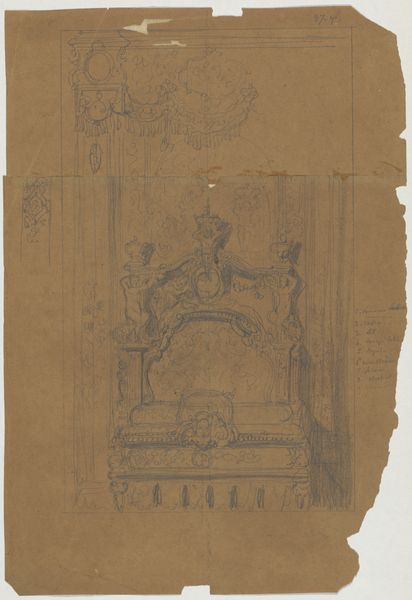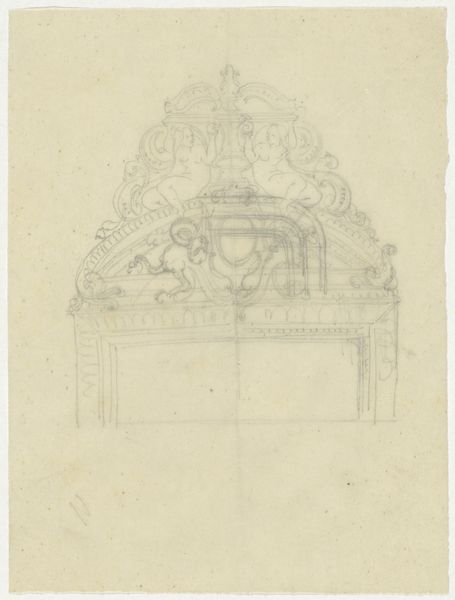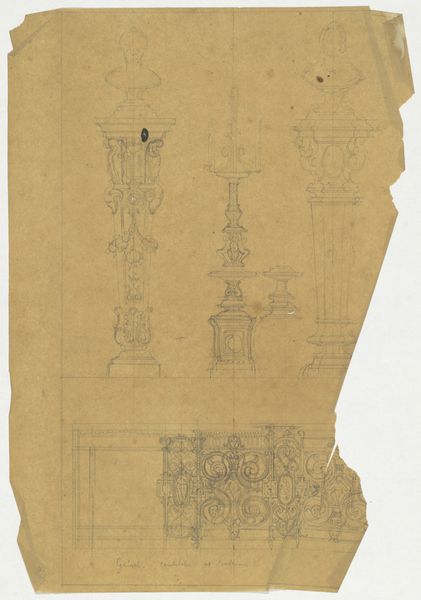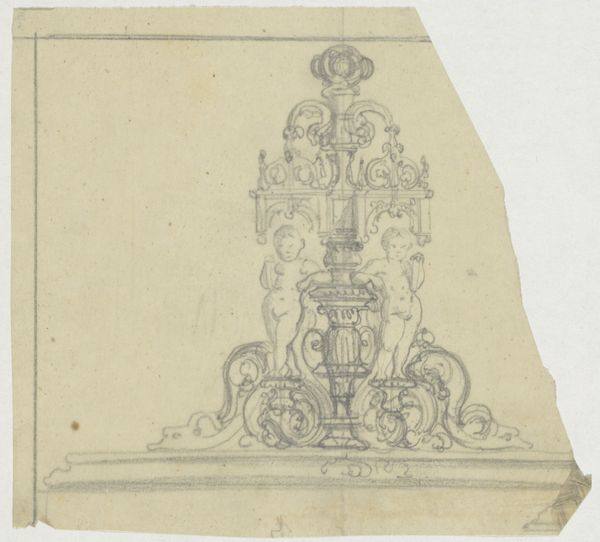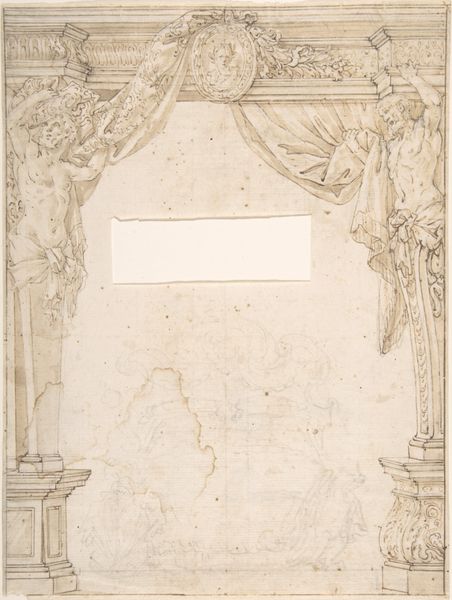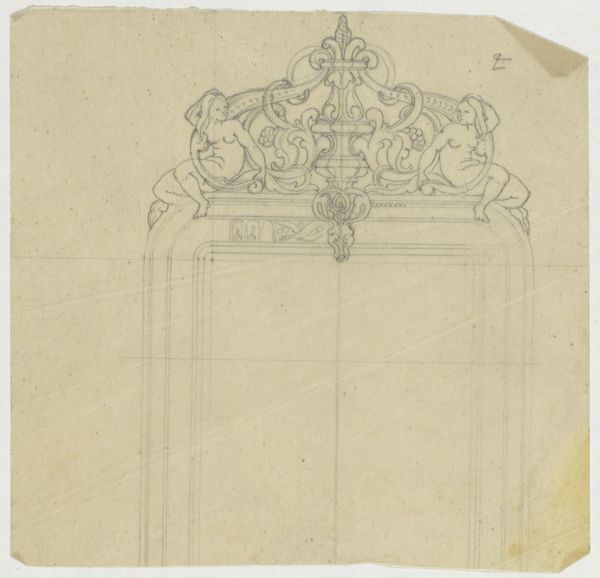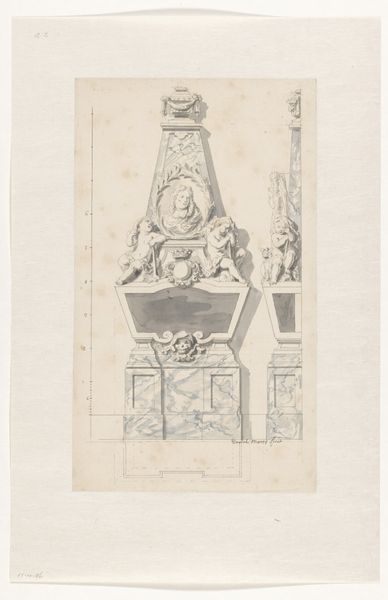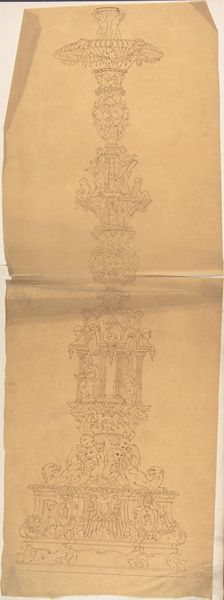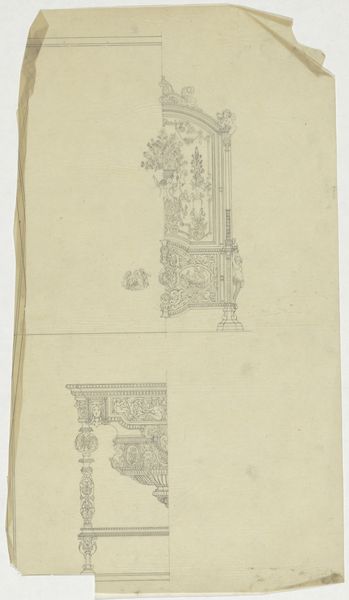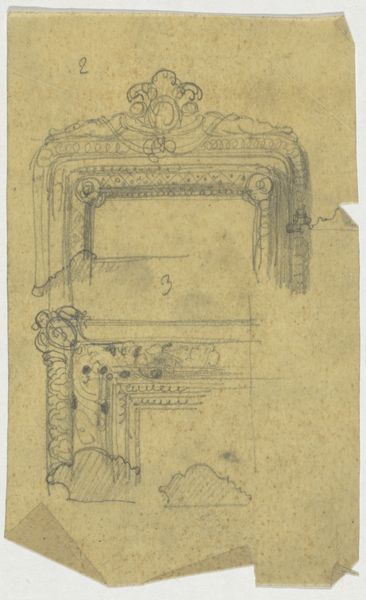
drawing, paper, pencil
#
portrait
#
drawing
#
amateur sketch
#
neoclacissism
#
aged paper
#
toned paper
#
light pencil work
#
pencil sketch
#
incomplete sketchy
#
paper
#
form
#
personal sketchbook
#
geometric
#
pencil
#
sketchbook drawing
#
pencil work
#
sketchbook art
Dimensions: height 293 mm, width 395 mm
Copyright: Rijks Museum: Open Domain
Curator: Here we have "Kabinet," a pencil drawing on paper created by Firma Feuchère sometime between 1830 and 1850. What are your first impressions? Editor: It feels incomplete, like a fleeting idea captured quickly in a personal sketchbook. The aged paper lends it a ghostly quality. I'm curious about its intended function. Curator: Firma Feuchère was a design firm that catered to a wealthy clientele, producing drawings for elaborate furniture pieces and interiors. The cabinet design here, rooted in neoclassicism, speaks to an era defined by specific notions of status and taste. Think about the labour involved in realizing something so ornate! Editor: Right. Neoclassicism was very much a symbolic visual language of power, wasn’t it? This wasn't just about aesthetics; it was a deliberate attempt to connect with ideals of order and authority of the classical world and thus with those who owned objects like these. Were they actually built, I wonder, and who profited from the exploitation of labor to make something that seems now so… delicate and arcane. Curator: That’s a valid consideration. The incompleteness might reflect the evolving tastes of their patrons, their whims dictating design changes. This image serves almost as an unintentional artifact, highlighting not just design, but the systems that supported luxury. Editor: It is a potent reminder of inequality made manifest in the home, if the owner chose to complete it. I also read the paper itself almost as a metaphor—the missing parts speak to the absences within these idealized depictions of refinement and success, the stories never fully drawn out. Curator: It makes you wonder about those discarded pieces of the paper, doesn’t it? Were those sections rejected elements of the design itself, literally torn away? This also opens up a broader consideration of how we "edit" history, presenting polished narratives that obscure uncomfortable truths about class and power. Editor: Yes, art never exists in a vacuum. I initially responded to it viscerally, almost as if encountering a ruin; but discussing it brings those socio-political resonances to the foreground in surprising ways. Thank you. Curator: Likewise. It is striking how a simple sketch can be a potent mirror reflecting social complexities.
Comments
No comments
Be the first to comment and join the conversation on the ultimate creative platform.
